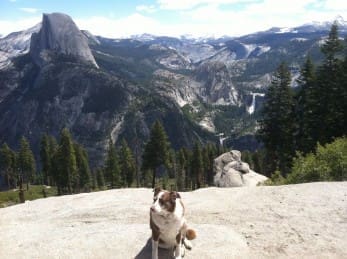

What is a Solar Trifecta?
First, the Dodge truck you see here is soon to become the main gear shuttle vehicle for our American River rafting expeditions this season. It was converted to 100% waste vegetable oil (WVO) at GreaseKings in Sacramento and will joined the EcoBus as the first 100% WVO powered whitewater river rafting transportation system in use on the American River. Similar to EcoBus, this truck required the installation of a second fuel tank to contain the WVO, an electrically controlled fuel management valve to switch from the Diesel#2 fuel tank to the WVO tank, a countercurrent exchange system to heat the WVO, and a special filter system to both heat and purify the WVO before it enters the sensitive fuel management system of the Cummins turbodiesel engine of this 2005 Dodge Ram 4×4 pickup. Also similar to EcoBus, using 100% WVO will achieve an 80% reduction is greenhouse gas emissions. However, this improvement will occur not only for our rafting shuttles but for food shopping and errands, all while achieving approximately 19 miles per gallon on WVO. Amazingly, this is better mileage than we get with our current Toyota T-100 with a V6 gasoline engine. Not only will we be saving carbon, our mean fuel cost for WVO is 50 cents per gallon, or approximately one eighth the current cost of petro products!
Second element in the Trifecta are solar hot water heating panels. Our solar guru and benefactor, Allen Carrozza, is generously loaning them to the River Center to expand our solar hot water heating and educational opportunities. These panels will reduce the propane required to heat hot water for showers, etc., all by a whopping 73%.
Third in the Trifecta is “PLUGRIN”, the electric car we transported from Santa Barbara that is being lent to us by Dorothy Pearce. It will be recharged from the photovoltaic panels attached to the front of the Solar Energy Exploratorium. This four passenger car has a range of 35 miles, a top speed of 25 mph and will be used to draw attention to the SEE as well as to run errands to Coloma. Such cars are of increasing interest and a similar car, the “ZEN” or Zero Emissions Neighborhood car, was recently featured on the front page of the Sacramento Bee. With gas prices rising above $4 per gallon, interest in electric cars is no longer academic.
We now will be able to collect vegetable oil from local restaurants in Coloma with an electric car, recharge the car with our PV panels, then power our larger vehicles with the WVO. Solar power makes the electricity to power the electric car, solar energy creates the vegetable oil through photosynthesis, solar energy from the panels will heat the water that warms the WVO while we refine it. A solar scenario that’s renewable, cheap and near zero carbon emissions. It is past time to implement such changes if we are to safeguard the future of our children. Let us work together to make it happen!








